Art World
Erwin Wurm Reflects on Weight Loss as Sculpture at Berlin Survey Show
The particularities of Austrian humor explained.
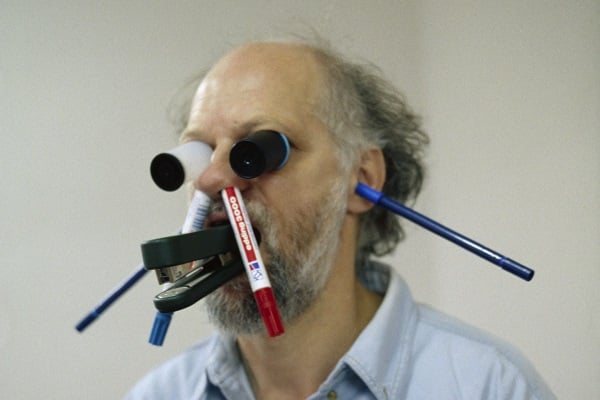
The particularities of Austrian humor explained.

Harlie Rush

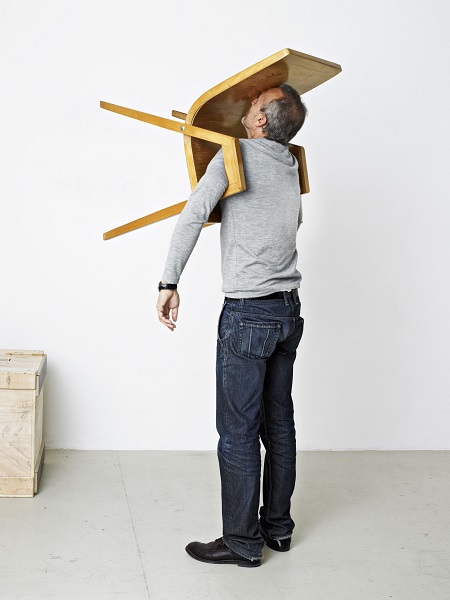
The Idiot III (One Minute Sculpture), 2010,
Photo: © Erwin Wurm, VG BILD-KUNST Bonn, 2016; courtesy: Galerie Thaddaeus Ropac, Salzburg, Paris; Studio Wurm.
Austrian artist Erwin Wurm—who will represent Austria at next year’s Venice Biennale together with Brigitte Kowanz—opened an exhibition of his works in Berlin this past Friday. The comprehensive show includes sculptures, videos, drawings for his one-minute-sculptures shown to the public for the first time, and the highlight, Narrow House—a detailed reproduction of his childhood home stretched to extremely narrow proportions, which was displayed in the 2011 Venice Biennale.
Wurm’s work often contains elements of participation and references to the body, as well as tongue-in-cheek commentary on social issues using common household objects such as our cars. In an exhibition walk-through with artnet News, Wurm explains he seeks to “bring sculptural and social issues together, and twist them around.”
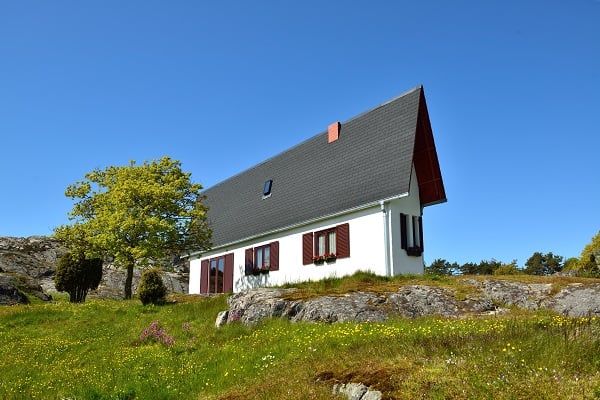
Narrow House, Pilane 2015
Photo: © Erwin Wurm, VG BILD-KUNST Bonn, 2016, Studio Wurm
The exhibition’s title, “Bei Mutti“, could be roughly translated to “at mama’s”, but its specific tone and current connotations demands further unpacking. Wurm explains the word “Mutti” as insinuating “a specific family area… it means privacy, and social closeness.” But the word has a negative side, too.
“Mutti is also closely related to Angela Merkel,” he says, as many have taken to referring to her as Germany’s “Mutti”—whether this is meant positively or negatively varies according to situation. Wurm also points out the contrast between Merkel’s refugee policy and what some call her “opening of society” and the notions expressed in his Narrow House.
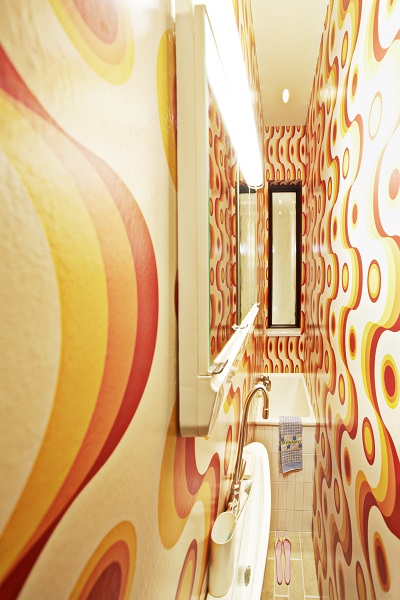
Narrow House, Pilane, inside view, 2015
Photo: © Erwin Wurm, VG BILD-KUNST Bonn, 2016, Studio Wurm
The work is a model of his parents’ home rendered in the actual height and length, but shrunken dramatically width-wise. The viewer is able to walk through and examine the work, noting that every detail of the home is replicated, down to the outdated wallpaper and (incredibly thin) toilet.
Wurm describes the family home as a structure with “no architect”: built in the 1960s, it is one of many houses constructed from “industrial, pre-fabricated models,” which he admits were oftentimes ugly.
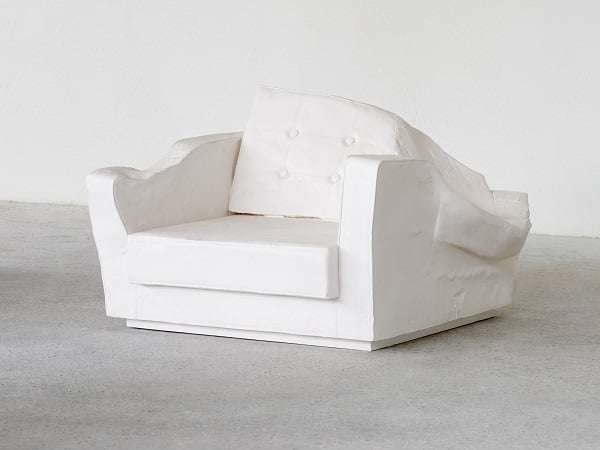
Triple Seat, 2015
Photo: Eva Würdinger; © Erwin Wurm, VG BILD KUNST, Bonn 2016; courtesy Galerie Thaddaeus Ropac, Paris, Salzburg.
Wurm’s product replications are also closely related to his childhood household, mostly modeled off designs from the 60s and 70s. These sculptures, he says, are about “mixing sensations which are related to a specific object.”
The items are made from clay, “transformed and deformed” by the artist, and then cast in resin or bronze. There is a giant clock with track-marks, as the artist has run over it, and a bed with a large, permanent footprint in it that resembles memory foam that did not reform. A refrigerator looks almost as if it’s melting: Wurm pushed against the clay model, remarking that it now strongly resembles a stick of butter which would usually be kept inside it. “At a certain point in my career, I decided that everything that surrounds me is a possible target, a possible object for a piece,” he explains.
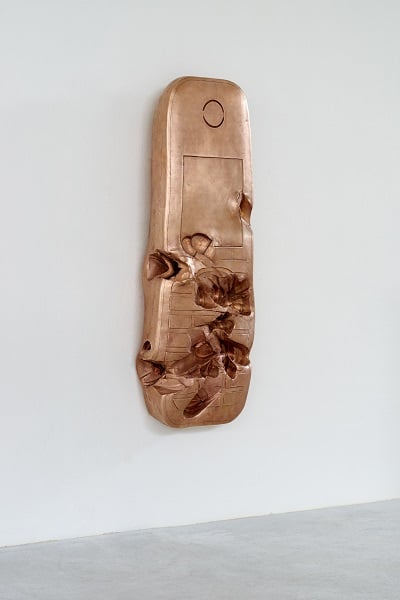
Phone, 2015,
Photo: Eva Würdinger; © Erwin Wurm, VG BILD KUNST, Bonn 2016; courtesy Galerie Thaddaeus Ropac, Paris, Salzburg.
In the adjacent room, there are nearly 80 drawings from his famous One Minute Sculptures, a collection of works which usually entail a visitor struggling to interact with an object in the way that the artist instructs him or her. Wurm has been making these since 1997, and continues to create them; he points out that next year will mark the 20th anniversary of employing this process. (His One Minute Sculptures were the inspiration behind the Red Hot Chili Peppers’ video for their 2002 single Can’t Stop).
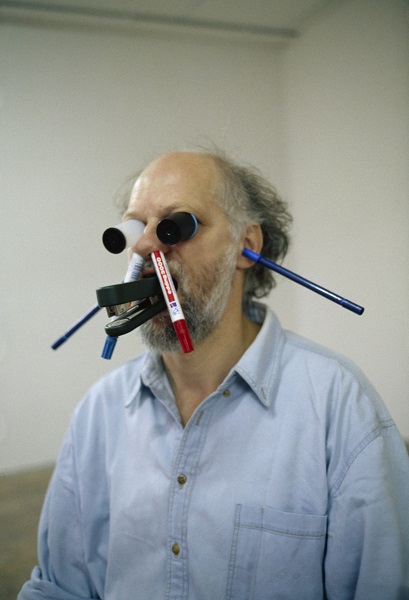
One Minute Sculpture, 1997
Photo: © Erwin Wurm, VG BILD-KUNST Bonn, 2016; courtesy of Galerie Thaddaeus Ropac, Salzburg, Paris; Studio Wurm
In the center of this room is Wurm’s From Men’s Size 38 to Size 48 in Eight Days, an instruction book which restricts everything from meal content to room temperature in order to facilitate extreme weight gain. Many of the specific foods called for in the manual are Austrian sweets and recipes that are rich and heavy. Wurm explains his occupation with weight gain as a medium: “When someone makes a sculpture out a clay, he adds volume, he takes volume away… But you could also say gaining or losing weight is sculptural work.”
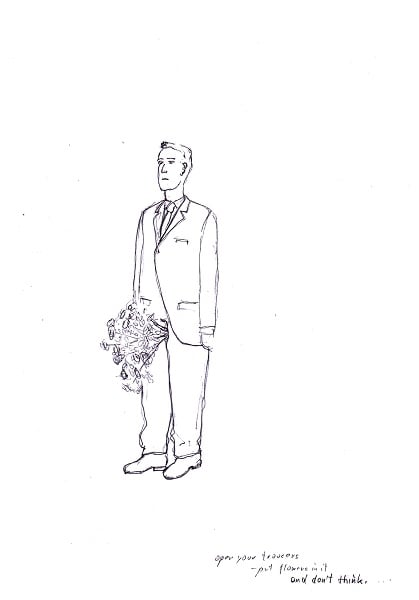
Open your trousers, put flowers in it and don’t think … (One Minute Sculpture), 2002,
Photo: © Erwin Wurm, VG BILD KUNST, Bonn 2016; courtesy Studio Erwin Wurm
Indeed, humor is a recurring factor in Wurm’s work, and he believes it could be related to his Austrian identity. “Austria was a big country once, then it was cut down, and only later on they realized, oops, we are very small, so people were afraid that Austria could not survive […] and this kind of humor is a weapon to fight your own fear, and to fight your speculations. It helps a lot. If you are able to laugh about yourself, things are a little easier. Maybe that’s a part of being Austrian.”
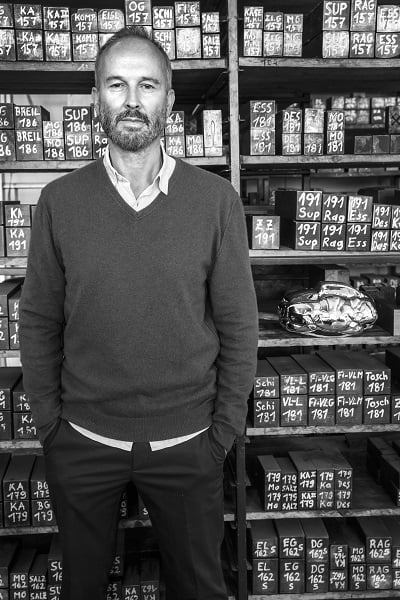
Erwin Wurm, 2014
Photo: © Inge Prader
Will this attitude towards his native country be reflected in his work at Venice next year? “A year is not long, we will see,” he notes.
“Erwin Wurm, Bei Mutti” is on view at the Berlinische Galerie from April 15 – August 22.